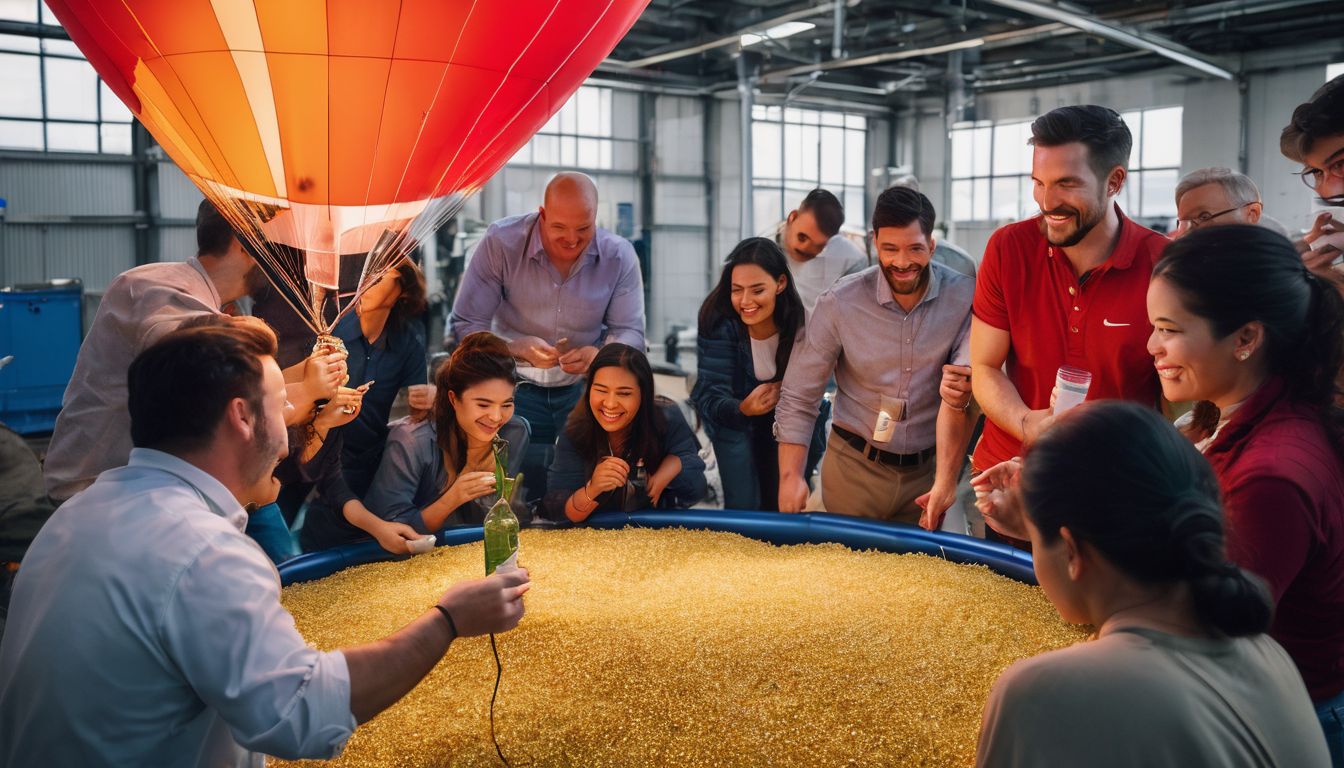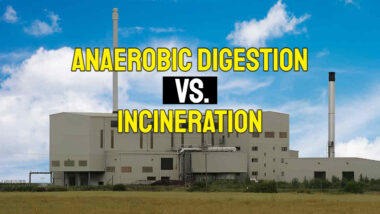The Balloon Biogas Plant can be a long-term answer to renewable power production for small farms and rural communities. Stick around while we make the case for that hypothesis in this article!
While searching for renewable energy solutions, you might have stumbled upon the concept of balloon biogas plants. These unique constructions use heat-sealed plastic or synthetic rubber bags to provide the right conditions for anaerobic digestion and hold the biogas produced from organic waste materials.
In this blog post, we're going to guide you through building your own balloon biogas plant, offering a greener alternative for power generation while also reducing waste. Ready? Let's dive into the world of sustainable energy creation with balloon biogas plants!
Key Takeaways
- Balloon biogas plants are a sustainable solution for generating renewable energy by using heat-sealed plastic or rubber bags to hold gas produced from organic waste materials.
- Building a balloon biogas plant is simple and cost-effective, and it can last 2-5 years. It requires a tough, weather-resistant bag and works well in places with high groundwater tables and warm climates.
- Balloon biogas plants offer many benefits, including the ability to turn hard-to-break-down items like water hyacinths into energy. They are easy to clean, fix, and maintain, but they require extra care as the balloons can break if hit or dropped.
[boomdevs_toc]

The Process of Building a Balloon Biogas Plant
Making a balloon biogas plant is quite simple. First, we need a heat-sealed plastic or rubber bag. This bag will serve two roles. It will be the digester and the gas holder.
The Role of Balloon Biogas Plants in Renewable Energy Generation

Balloon biogas plants play a big part in producing green energy. They are made of strong plastic or rubber bags. These bags act as the digester and gas-holder all at once. This way, balloon biogas plants work well in areas with high water tables.
Also, places with warm weather can get good use out of these units because they handle hard-to-break-down items like water hyacinths well. But there is one small problem: the gas pressure can be too low sometimes! So, we need to use pumps to move the gas around.
This special kind of biogas plant lasts for about two to five years on average.
The best thing about them? They're not that expensive! If you're living somewhere where the bag won't tear easily and where it's nearly always hot, then this type of plant could prove helpful.
So let's think more about how useful these systems are. We should look into using more of these renewable energy sources in our towns.

The Sustainability and Benefits of Balloon Biogas Plants
Source: Tumwesige V, Davidson G, Fulford D. Biogas appliances in Sub-Sahara Africa. Biomass Bioenerg 2013

Balloon biogas plants are very good for our planet. They use renewable energy and cost little to build. We can put them in an area with high groundwater easily. This is because they do not need a deep hole to be set up.
It's best to use these plants in warm places as they work better there. These balloon plants are easy to clean, fix, and take care of too! Plus, they can turn hard-to-break-down stuff like water hyacinths into energy.
How to Make a Plug Flow Balloon Biogas Digester
The plug-flow type of biogas balloon digester is the most commonly installed type (see Fig. 2.4.1).
They are made out of an elongated bag with a length-to-breadth ratio of roughly 5:1.
Wet organic waste is fed into one end of the digester, while effluent material exits the other.
A shallow ditch is excavated that holds the digester (bag) and the feedstock inside of it supports the digester (bag).
The biogas creates bubbles that flow up from the decomposing organic waste and are kept in the bag's upper section. The gas is routed from the bag into the kitchen via a gas connection on top. There are no devices for stirring or heating the digester's contents in the most basic form.

Every day, vegetable matter in the form of a slurry will be fed into the plug-flow anaerobic digestion balloon. The system will also produce a useful quantity of biogas every day, which is useful. But you have to watch out; the balloons don't last long and can break if hit or dropped.
If you get a break or tear on your plant's biogas bag, it's cheaper to fix it yourself than buy a new one.
In the end, using these balloon biogas plants means we're doing what's best for us and our world!

Conclusion: Balloon Biogas Plants as a Future Energy Solution
Balloon biogas plants are a bright spot for future energy. They are low-cost and easy to use. These types of plants work well in warm places with even temperatures. Despite needing extra care, they offer a sustainable way to create renewable energy.

FAQs
1. What is a balloon biogas plant?
A balloon biogas plant, also known as a balloon digester or low-cost polyethylene tube digester, is a type of renewable energy generator that uses organic waste to create gas for cooking power.
2. How does a balloon biogas plant work?
These plants work by using the anaerobic digestion process within heat-sealed plastic or rubber bags with:
- an organic slurry feed inlet and
- outlets for biogas and the remaining slurry (known as digestate),
these so-called “balloons” are where biomass sources such as manure, grass clippings, and/ or even water hyacinths(!) transform into biogas through these digesters that operate at a high temperature and only work really well in tropical climates.
3. Are they durable and weather-resistant?
Yes! Balloon biogas plants are made from UV-resistant materials like stabilized, reinforced plastic, or synthetic caoutchouc to withstand different types of weather conditions while maintaining their function.
4. Is it easy to set up and maintain these plants?
Balloon Biogas plants require low construction sophistication due to standardized prefabrication which makes them easy to build. For maintenance, scum removal can be done easily along with uncomplicated cleaning options.
5. What considerations need fixing before building these plants?
In setting up your own biogas plant, consider the skills of the contractor for quality building, availability of material required especially ones that are UV resistant and have good methane emission control . Also keep in mind sizing should match intended use capacity
6. Do we get anything else except gas from these Biogas plants?
Yes! Besides providing renewable energy and cooking power, the used-up biomass after fermentation turns into fertilizer supporting agriculture too.




